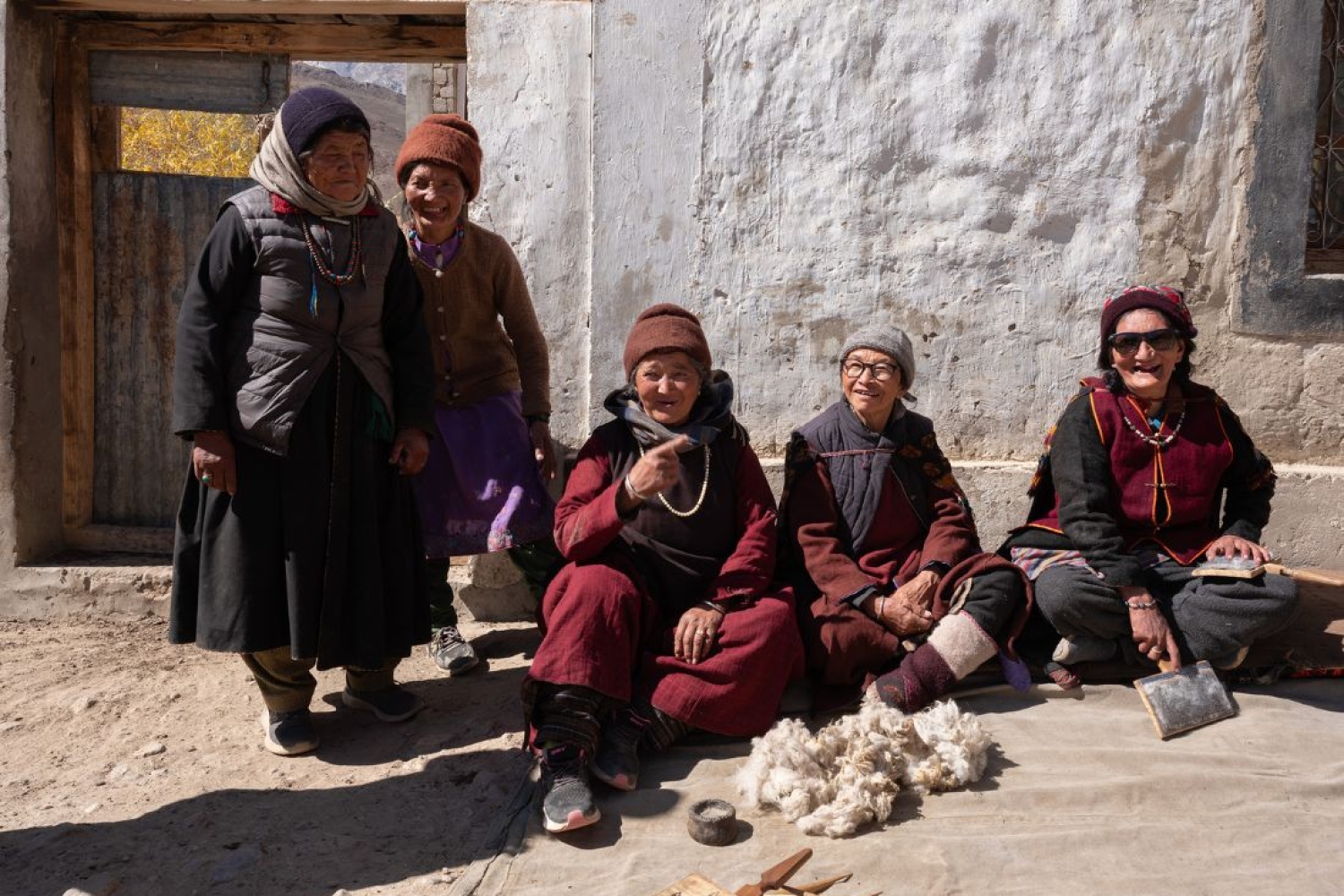

At around 8:30 a.m. on October 15, I touch down at Leh's charming little airport. As I gather my belongings and step outside, I spot a man holding a colorful, handcrafted sign that reads ‘Welcome, Sumalini Khullar,’ and I can't help but smile. In that moment, I know this trip is going to be unlike any other.
‘The Great Himalayan Exploration’, a joint collaboration between UNESCO and Royal Enfield, returned for its third edition—a one-of-a-kind motorcycling expedition focused on documenting the rich cultural heritage of the Indian Himalayan region. Through The Great Himalayan Exploration, Royal Enfield’s mission is to discover, document, and promote India’s Intangible Cultural Heritage (ICH). The goal is to cover 200 ICH elements across the Himalayan region. Over the course of three seasons, they have successfully engaged 148 rider-researchers who have helped document and preserve this invaluable cultural legacy. I was excited to join a group of like-minded riders, all eager to explore the vibrant culture and breathtaking landscapes of the Himalayas— all while fostering a shared sense of adventure and purpose.
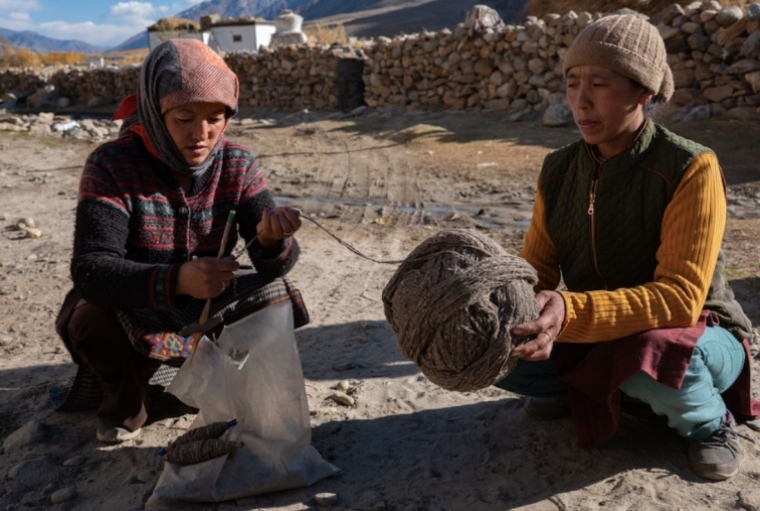
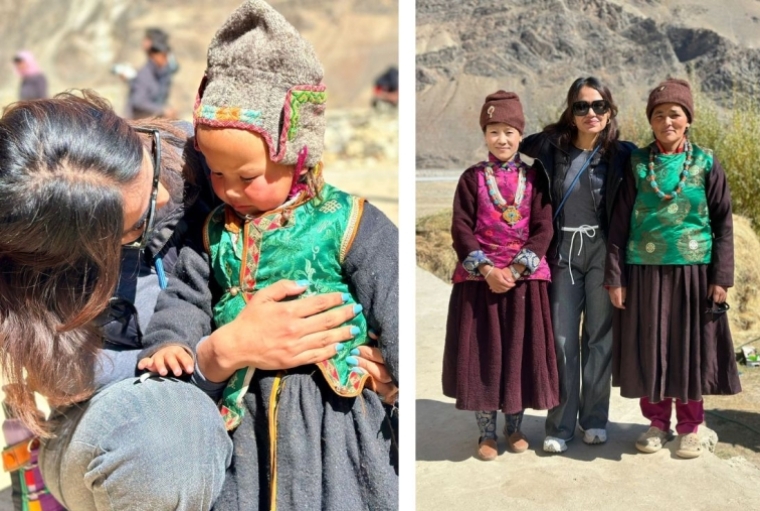
After dire warnings about acclimatisation, I arrived at my hotel, set up my hydration station and settled in to wait for the journey ahead. The recommendation was to rest and take it easy for 36-48 hours. At first, it felt excessive—almost like wasting time. But as the hours passed, I began to appreciate the luxury of it. Room service, breathtaking views, and me—drifting in and out of naps, giving my mind and body the space they needed to reset. Acclimatization wasn’t just physical; it was a mental cleanse, a process of decluttering to make space for everything I was about to experience over the next week. You’re forced to slow down to match the pace of the mountains.
Finally, the moment came to head out to the first stop on my journey. The drive from Leh to Kargil took about seven hours, and I was completely mesmerized. I told the driver I’d need to stop frequently for photos, and he smiled, nodding. But after the first two hours, I realized there was no point—I was running out of space on my camera roll. Luckily, my newly acclimatized mind still had plenty of room! I couldn’t stop staring at the landscape—it was so barren, yet sculpted; so untouched, yet smooth like velvet suede. It felt like the mountains were inviting me to reach out and touch them, solid yet strangely soft, as if they were waiting for you to experience their beauty up close.
The roads stretched out endlessly, empty, making you feel like the only person in the world—yet never truly alone. It’s hard to put this feeling into words, but it was pure, almost wholesome, as if the vastness of the landscape embraced you in its quiet solitude.
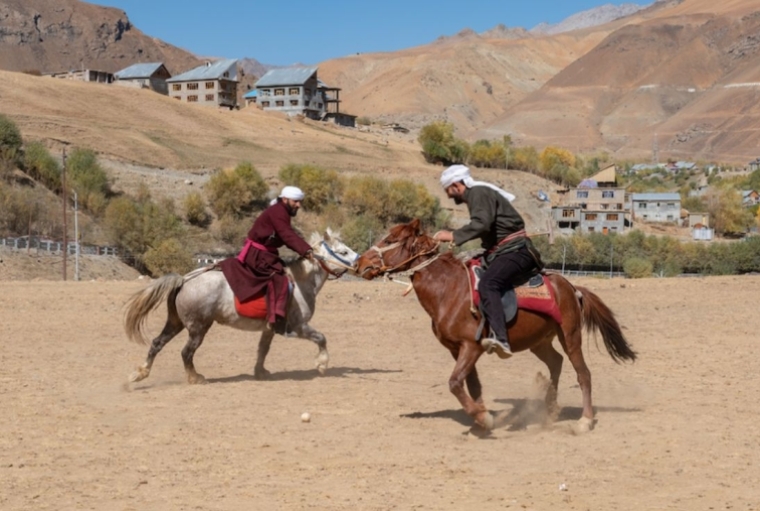
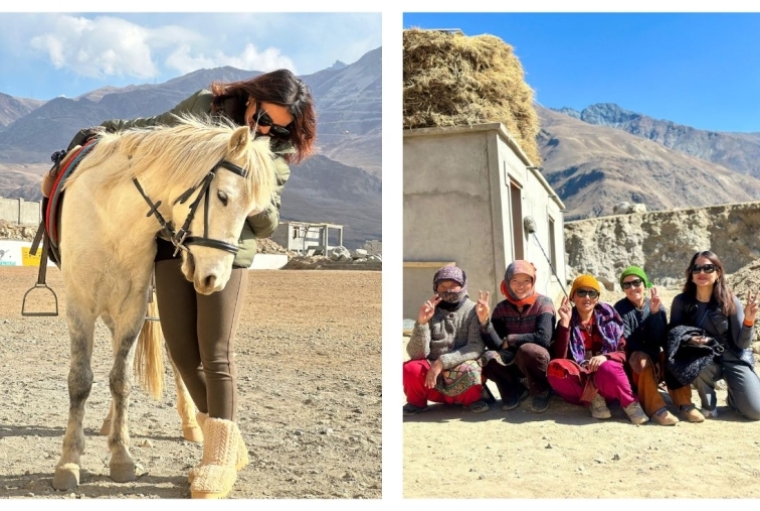
We arrived in Kargil, ready to settle down for a couple of days and dive into my first IHC activity of the trip: Horse Polo in Drass. Nestled by the Drass river on the Kargil-Srinagar highway, it was the perfect setting for this traditional sport. Learning about polo’s place in the local culture was fascinating. Originally a royal pastime. It has since become a community activity. Despite being an expensive sport with a limited playing season due to the climate, the locals and the state are doing their best to keep it alive and relevant. They’re organising tournaments and exhibition matches throughout the season, one of which we got to experience firsthand. It was inspiring to see woman and children being encouraged to participate in the sport, as it doesn’t just build resilience and a sense of community; it also creates job opportunities while preserving cultural traditions.
The two days we spent here were special. We spent time with the players and their horses, many of which were wild and untrained, learning alongside the riders. Local spectators, hailing from nearby villages, shared their pride and passion for the sport with us, explaining its unique rules and how it is different from the polo that we know.
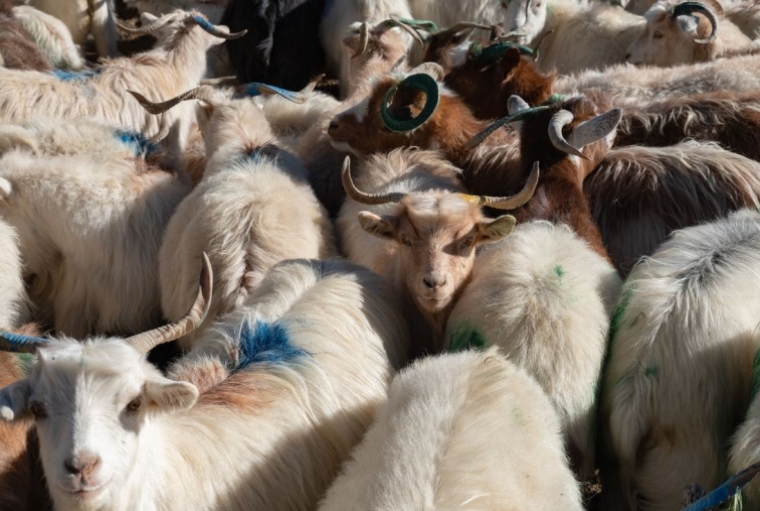
As the sun began to set, and the winds turned colder, we reluctantly wrapped up our time on the field. It was time to head back to Kargil, preparing for our next destination the following morning. The journey from Kargil to Zanskar Valley started bright and early; and if I thought I had already seen the best of the breathtaking landscapes, I was in for a surprise. This drive was something entirely beyond anything I’d imagined!
I hopped on as a pillion for part of the ride with the Royal Enfield crew—and what an adventure it was! The thrill of the open road, the wind in my hair, and the endless vistas that seemed to stretch on forever. On a bike, you experience a place in a way that's completely different—there’s something about it that feels raw, real, and utterly immersive. If you ever wanted to truly feel the essence of a place, this is it. We rode through the stunning Suru Valley, winding our way up the roads to the snow-covered Penzi La Pass. Each curve revealed a new, breathtaking view, and the descent into Zanskar Valley felt like stepping into another world. Towering mountains, remote Buddhist monasteries, and fluttering prayer flags—everything felt like a scene pulled straight from a dream.
Upon arrival in Zanskar Valley, we settled in Padum, a small and quaint village that quickly felt like home. The villagers welcomed us with open arms, their warmth and generosity melted the lingering chill from the journey. They invited us into their homes, sharing their local cuisine and stories, as the temperatures outside dipped to -9 degrees!
Each meal was a shared experience, held in a traditional living room, with thickly carpeted floors for warmth. Sitting cross-legged, we played card games and exchanged stories of our lives, bridging the gap between worlds, it was so easy to forget about the world. And fully loose oneself into this one.
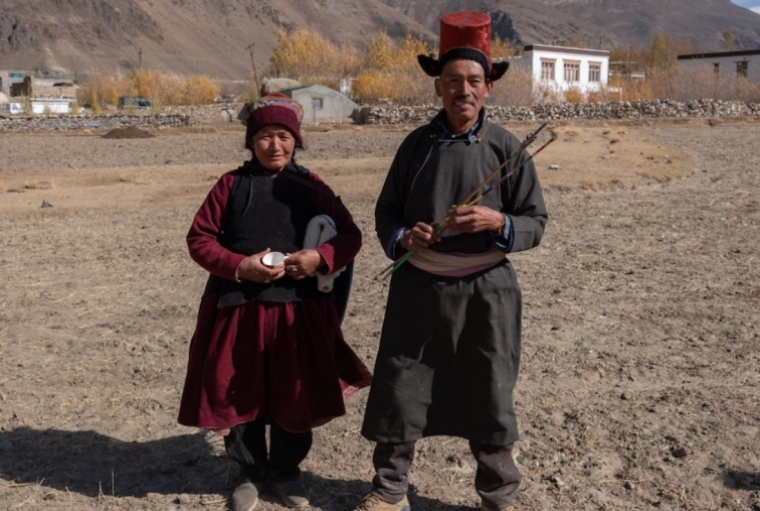
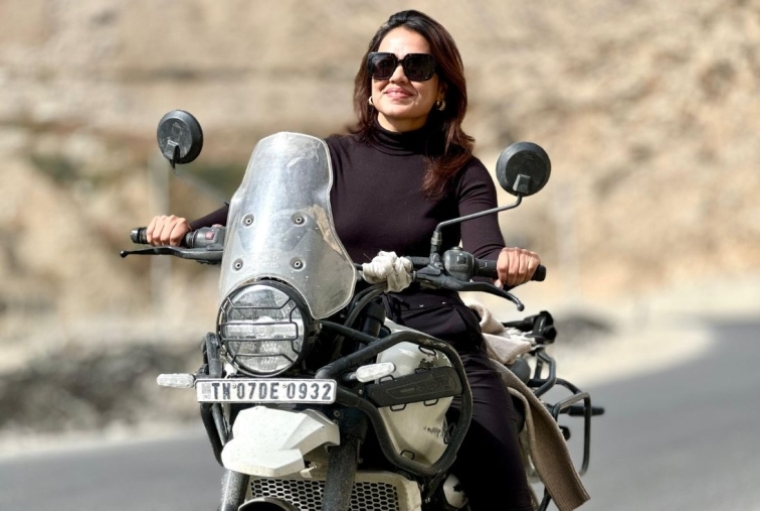
The next day started with an introduction to sheep wool weaving, which is part of the 'Himalayan Knot'—Royal Enfield textile conservation programme—a large collaborative effort to bring together artisan Himalayan communities, urban designers, creative practitioners and social organisations.
We spent the day with the women of the village, who guided us through each step of their process with patience and warmth. Padum is the second coldest inhabited village in the world, and while the sun shines brightly for only a few hours each day, that short burst of light becomes a moment of productivity. The women set up shop in the sun, laughing, chatting, and working side by side, creating beautiful pieces together. What was most fun to see was just how cool and stylish everything they were making was. Of course, I couldn't resist picking up a few things myself. I know that whenever I wear them, I'll smile, remembering the experience, and hopefully carry a little of that peace and calm with me.
The next two days were dedicated to archery—a practice that has been integral to the warriors of Ladakh for centuries. The art of archery still thrives in this land, with bows and arrows made from bamboo, which is rare in this barren region, making them even more special. We had the chance to witness the archery festival, where the energy of the day was palpable, but what really stood out was sitting with a father-son duo who shared their deep connection to the craft. For fathers and sons in Ladakh, archery is more than just a sport; it's a bonding ritual. Fathers not only teach their sons how to aim and shoot but also how to make the bow and arrows themselves. The festival brings the entire community together, filled with music, dance, and a vibrant celebration of Ladakhi culture.
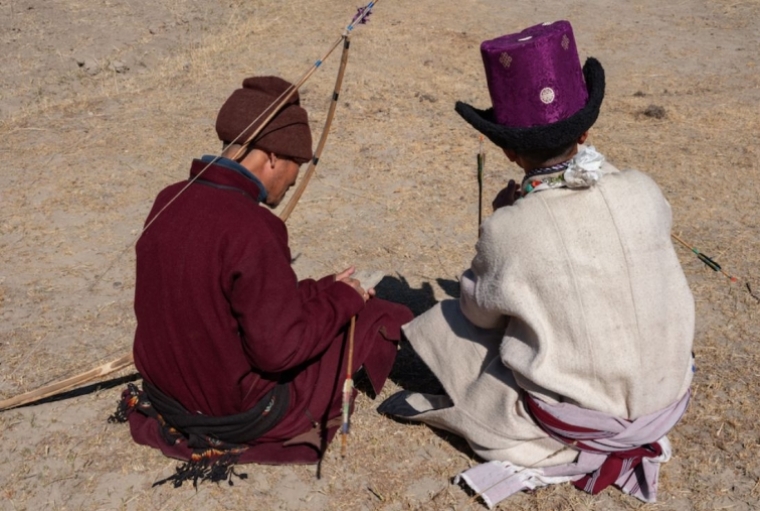
We all had the chance to try our hand at archery, spending the day in the carefree spirit of play, laughing and enjoying the moment. As my wonderful days in Leh came to an end, I had one last seven-hour drive back to the main city. This journey, with no phone service and nothing but the open road, turned out to be my favorite. As I gazed out the window, I found myself reflecting on the questions I didn’t even know I had. I felt a profound sense of calm, a reassurance that I would always carry with me, and I knew I would long to return to this place again.
My trip may have ended here, but Royal Enfield’s Himalayan journey continues. As a part of their social mission, this month they brought ‘Journeying Across The Himalayas’ to Delhi—a multidisciplinary 10-day festival that celebrates the communities and collaborative spirit at the heart of their work. I’m excited to once again explore the rich cultural diversity and heritage of the Himalayas—through its installations, panel discussions, music, food, and stories—right from the comfort of my city.
Words Sumalini Khullar
Date 12.12.2024
Photography Manou